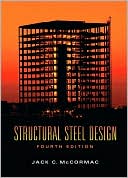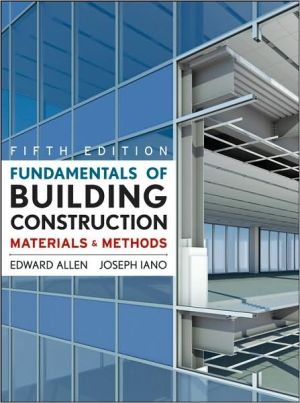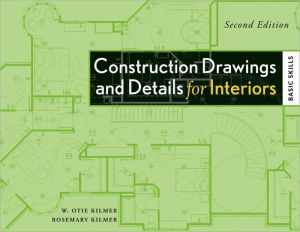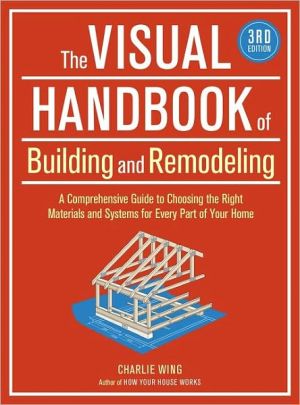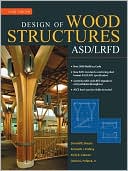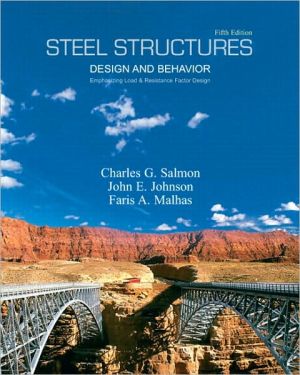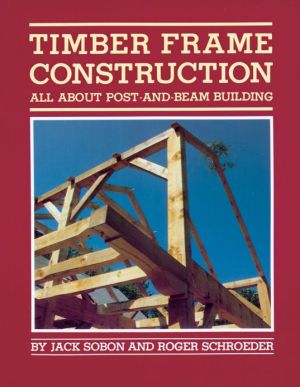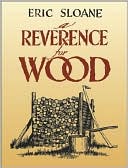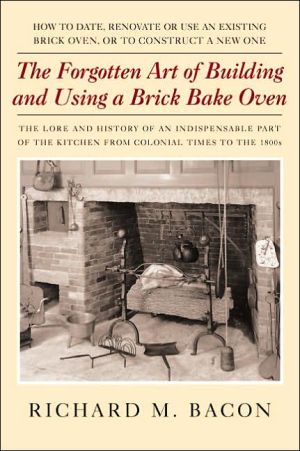Structural Steel Design
Search in google:
The material is presented in a clear, reader-friendly style.This best-selling text has been fully updated to conform to the latest American Manual of Steel Construction. Both Load and Resistance Factor Design (LRFD) and Allowable Stress Design (ASD) are now covered and calculations are worked out side-by-side to allow for easy identification of the different methods. Use of SI units as an addition to the primary use of Inch-Pound units. New coverage of Lateral Torsional Bending and Hollow Structural Sections.For steel design students and professionals.
1. Introduction to Structural Steel Design.1.1 Advantages of Steel as a Structural Material1.2 Disadvantages of Steel as a Structural Material1.3 Early uses of Iron and Steel1.4 Steel Sections1.5 Metric Units1.6 Cold-Formed Light-Gage Steel Shapes1.7 Steel-Strain Relationships in Structural Steel1.8 Modern Structural Steels1.9 Uses of High-Strength Steel1.10 Measurement of Toughness1.11 Jumbo Sections1.12 Lamellar Tearing1.13 Furnishing of Structural Steel1.14 The Work of the Structural Designer1.15 Responsibilities of the Structural Designer1.16 Economical Design of Steel Members1.17 Failure of Structures1.18 Handling and Shipping Structural Steel1.19 Calculation Accuracy1.20 Computers and Structural Design 2. Specifications, Loads, and Methods of Design.2.1 Specifications and Building Codes2.2 Loads2.3 Dead Loads2.4 Live Loads2.5 Environmental Loads2.6 Loads and Resistance Factor Design (LRFD) and Allowable Design (ASD)2.7 Normal Strengths2.8 Two Methods for Doing the Same Thing2.9 Shading2.10 Computation of Loads for LRFD and ASD2.11 Computing Combined Loads with LRFD Expressions2.12 Computing Combined Loads with ASD Expressions2.13 Discussion of Sizes of Load Factors and Safety Factors2.14 Author’s Comment2.15 Problems 3. Analysis of Tension Members.3.1 Introduction3.2 Nominal Strengths of Tension3.3 Net Areas3.4 Effect of Staggered Holes3.5 Effective Net Areas3.6 Connecting Elements for Tension Members3.7 Block Shear3.8 Problems 4. Design of Tension Members.4.1 Selection of Sections4.2 Built-Up Tension Members4.3 Rods and Bars4.4 Pin-Connected Members4.5 Designs for Fatigue Loads4.6 Problems 5. Introduction to Axially Loaded Compression Members.5.1 General5.2 Residual5.3 Sections used for columns5.4 Development of Column Formulas5.5 The Euler Formula5.6 End Restraint and Effective Length of Columns5.7 Stiffened and Unstiffened Elements5.8 Long, Short, and Intermediate5.9 Column Formulas5.10 Maximum Slenderness Ratios5.11 Example Problems5.12 Problems 6. Design of Axially Loaded Tension Members.6.1 Introduction6.2 AISC Design Tables6.3 Column Splices6.4 Built-Up Columns6.5 Built- Up Columns with Components in Contact with each other6.6 Connection Requirements for Built-Up Columns Whose Components are in Contact with Each other6.7 Built-Up Columns with Components not in Contact with Each Other6.8 Introductory Remarks Concerning Flexural-Torsional Buckling of CompressionMembers6.9 Single-Angle Compression Members6.10 Sections Containing Slender Elements6.11 Problems 7. Design of Axially Loaded Compression Members Continued.7.1 Further Discussion of Effective Lengths7.2 Frames Meeting Alignment Chart Assumptions7.3 Frames not meeting Alignments Chart Assumptions7.4 Stiffness-Reduction Factors7.5 Columns Leaning on Each Other for In-Plane Design7.6 Base Plates for Concentrically Loaded Columns7.7 Problems 8. Introduction to Beams.8.1 Types of Beans8.2 Sections used as Beams8.3 Bending Stresses8.4 Plastic Hinges8.5 Elastic Design8.6 The Plastic Modulus8.7 Theory of Plastic Analysis8.8 The Collapse Mechanism8.9 The virtual-Work Method8.10 Location of Plastic Hinge for Uniform Loadings8.11 Continuous Beams8.12 Building Frames8.13 Problems 9. Design of Beams for Moments.9.1 Introduction9.2 Yielding Behavior-Full Plastic Moment, Zone 19.3 Design of Beams, Zone 19.4 Lateral Support of Beams9.5 Introduction to Inelastic Buckling, Zone 29.6 Moments Capacities, Zone 29.7 Elastic Buckling Zone 39.8 Design Charts9.9 Noncompact Sections9.10 Problems10. Design of Beams–Miscellaneous Topics. (Shear, Deflection, ect.)10.1 Design of Continuous Beams10.2 Shear10.3 Deflections10.4 Webs and Flanges with Concentrated Loads10.5 Unsymmetrical Bending10.6 Design of Purlins10.7 The Shear Center10.8 Beam-Bearing Plates10.9 Problems11. Bending and Axial Force.11.1 Occurrence11.2 Members Subject to Bending and Axial Tension11.3 First-Order and Second-Order Moments for Members SubjectTo Axial Compression and bending11.4 Magnification Factors11.5 Moment Modification or C Factors11.6 Review of beam-Columns in braced Frames11.7 Design of Beam-Columns —Braced or Unbraced11.8 Review of Beam-Columns in Unbraced Frames11.9 Problems12. Bolted Connections.12.1 Introduction12.2 Types of Bolts12.3 History of High-Strength Bolts12.4 Advantages of High-Strength Bolts12.5 Sung Tight, Pretensioned, and Slip-Critical Bolts12.6 Methods for Fully Pretensioning High-Strength Bolts12.7 Slip-Resistant Connections and Bearing-Type Connections12.8 Mixed Joints12.9 Sizes of Bolt Holes12.10 Load Transfer and types of Joints12.11 Failure of Bolted Joints12.12 Spacing and Edge Distance of Bolts12.13 Bearing-Type Connections-Loads passing through Center of Gravity ofConnections12.14 Slip-Critical Connections-Loads Passing Through Center of Gravity ofConnections12.15 Problems13. Eccentrically Loaded Bolted Connections and Historical Notes on Rivets.13.1 Bolts Subject to Eccentric Shear13.2 Bolts Subject to Shear and Tension (Bearing Type Connections)13.3 Bolts Subject to Shear and Tension (Slip-Critical Connections)13.4 Tension Loads on Bolted Joints13.5 Prying Action13.6 Historical Notes on Rivets13.7 Types of rivets13.8 Strength of Riveted Connections-Rivets in Shear and Bearing13.9 Problems14. Welded Connections.14.1 General14.2 Advantages of Welding14.3 American Welding Society14.4 Types of Welding14.5 Prequalified Welding14.6 Welding Inspection14.7 Classification of Welding14.8 Welding Symbols14.9 Groove Welds14.10 Fillet Welds14.11 Strength of Welds14.12 AISC Requirements14.13 Design of Simple Fillet Welds14.14 Design of Connections for Members with Both Longitudinal and TransverseFillet Welds14.15 Some Miscellaneous Comments14.16 Design of Fillet Welds for Truss Members14.17 Plug and Slot Welds14.18 Shear and Torsion14.19 Shear and Bending14.20 Full-Penetration and Partial-Penetration Groove Welds14.21 Problems15. Building Connections.15.1 Selection of Type of Fastener15.2 Types of Beam Connections15.3 Standard Bolted Beam Connections15.4 AISC Manual Standard Connection Tables15.5 Designs of Standard Bolted Framed Connections15.6 Designs of Standard Welded Framed Connections15.7 Single-Plate or Shear Tab Framing Connections15.8 End-Plate Shear Connections15.9 Designs of Welded Seated Beam Connections15.10 Stiffened Seated Bean Connections15.11 Design Of moments Resisting FR Moment Connections15.12 Column Web Stiffeners15.13 Problems16. Composite Beams.16.1 Composite Construction16.2 Advantages of Composite Construction16.3 Discussion of Shoring16.4 Effective Flange Widths16.5 Shear Transfer16.6 Partially Composite Beams16.7 Strength of Shear Connectors16.8 Number, Spacing, and Cover Requirements for Shear Connectors16.9 Moment Capacity of Composite Sections16.10 Deflections16.11 Design of Composite Sections16.12 Continuous Composite Sections16.13 Design of Concrete-Encased Sections16.14 Problems17. Composite Columns.17.1 Introduction17.2 Advantages of Composite Construction17.3 Disadvantages of Composite Columns17.4 Lateral Bracing17.5 Specifications for Composite Columns17.6 Axial Design Strengths of Composite Columns17.7 Shear Strength of Composite Columns17.8 LRFD Tables17.9 Loads Transfer at Footings and Other Connections17.10 Tensile Strength of Composite Columns17.11 Axial Load and Bending17.12 Problem18. Cover-Plated Beams and Built-Up Girders18.1 Cover-Plated Beams18.2 Built-Up Girders18.3 Built-Up Girder Proportions18.4 Tension Field Action18.5 Design of Stiffeners18.6 Problems19. Design of Steel Buildings.19.1 Introduction to Low-Rise Buildings19.2 Types of Steel Frames Used for Buildings19.3 Common Types of Floor Construction19.4 Concrete Slabs on Open-Web Steel Joists19.5 One-Way and Two-Way Reinforced Concrete Slabs19.6 Composite Floors19.7 Concrete-Pan Floors19.8 Steel- Decking Floors19.9 Flat Slabs19.10 Precast Concrete Floors19.11 Types of Roof Construction19.12 Exterior Walls and Interior Partitions19.13 Fireproofing of Structural Steel19.14 Introduction to High-Rise Buildings19.15 Discussion of Lateral Forces19.16 Type of Lateral Bracing19.17 Analysis of buildings with Diagonal Wind Bracing for Lateral Forces19.18 Moment-Resisting Joints19.19 Design of Buildings for Gravity Loads19.20 Selection of MembersAppendix A. Derivation of the Euler Formula.Appendix B. Slender Compression Elements. Appendix C. Flexural-Torsion Buckling of Compression Members.Appendix D. Moment-Resisting Column Base Plates.Appendix E. Ponding.Glossary.Index.
